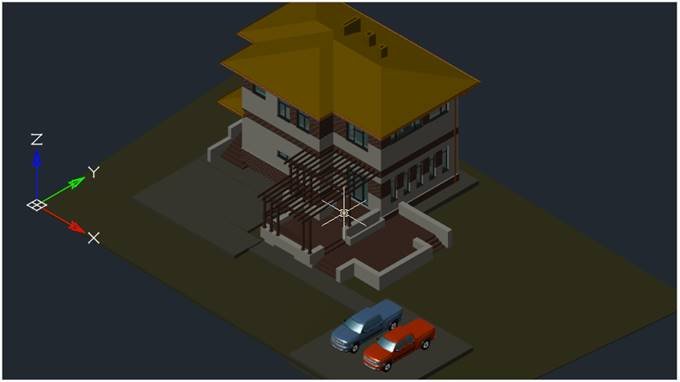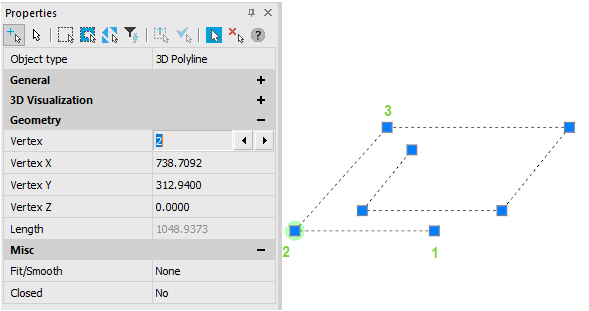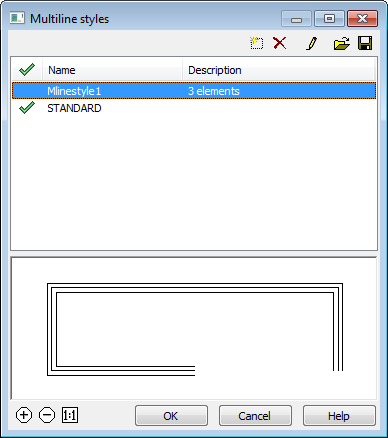Multiline Styles





In Multiline Styles dialog you can create, edit, save and load styles.
Multiline style defines number of elements and their properties. To create multiline style you should create items and define their properties.
In the bottom part of the dialog there are preview area and buttons to zoom in and zoom out. Also, you can use mouse wheel to zoom:
 |
Zoom in; |
 |
Zoom out; |
 |
Zoom 1:1. |
Options:
List of available styles loaded to the document.

Name
Name of multiline style.
Description
Text description.
Buttons
New
Creates new multiline style based on selected.

 Delete Delete |
Remove selected style from the current document. |
|---|---|
 Edit Edit |
Show multiline style editor dialog. |
 Load Load |
Load multiline styles from file to the current document. |
 Save Save |
Save selected styles to *.mln file. |
Saves selected styles to *.mln file.
To create multiline style:
Multiline style contains these parameters:
· number of elements and their position;
· offset from center line for each element;
· linetype and color for each element;
· joints for each multiline vertex;
· type of used end caps;
· color for multiline filling.
Elements with positive offsets are plased on the one side from center line, elements with negative offsets – on the other side.
1. Start Mline Styles command.
2. In Multiline Styles select desired style and click button

3. Click button 
4. Set desired parameters and click OK.
Options:
Description
Text description.
Ends
The type of end caps.
Start
End
Sets the type of end caps for start and end of the multiline.
Line
Displays a line segment across each end of the multiline.
Outer Arc
Displays an arc between the outermost elements of the multiline.
Inner Arc
Displays an arc between pairs of inner elements. If there’s an odd number of elements, the center line is unconnected. For example, if there are six elements, inner arcs connect elements 2 and 5 and elements 3 and 4. If there are seven elements, inner arcs connect elements 2 and 6 and elements 3 and 5. Element 4 is left unconnected.
Angle
Specifies the angle of the end caps.
Show
Controls the background fill of the multiline
Fill with Color
Sets the background fill color of the multiline. When you choose Select Color, the Select Color dialog box is displayed.
Joints
Controls the display of the joints at the vertices of each multiline segment.
Items
Sets element properties, such as the offset, color, and linetype, of new and existing multiline elements.
Offset
Specifies offset from the middle of the multiline. Elements are displayed in descending order of their offsets.
Color
Specifies color.
Linetype
Specifies linetype for element.
Add Item
Adds new element.


Removes the selected element.
Save Multiline Styles
Multiline Styles can be saved to *.mln file.
1. In the Multiline Styles dialog click 
2. In Save Multiline Styles dialog select styles. Click OK.
3. Specify the file name and path.
Load Multiline Styles
1. In the Multiline Styles dialog click 
2. Specify the file name and path.
3. In Load multiline style dialog select styles to load in the current document. Click OK.
Info: NanoCAD is a simple, cheap, and yet professional, CAD program for Windows, that allows a great user experience by providing enhanced performance, full capability, a classic interface and native.dwg format support. nanoCAD has been built to deliver design and project documentation for all industries. nanoCAD includes a full suite of basic and advanced CAD tools for 2D/3D drawing and creating industry-standard DWG-compatible CAD files. Our program provides innovative, collaborative and customizable features to raise your efficiency, and includes a number of API’s, allowing anything from routine task automation to complex CAD app development. You may download nanoCad for free, using the links below, and purchase later, in case you like it.






Post your comment on this topic.